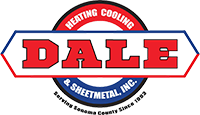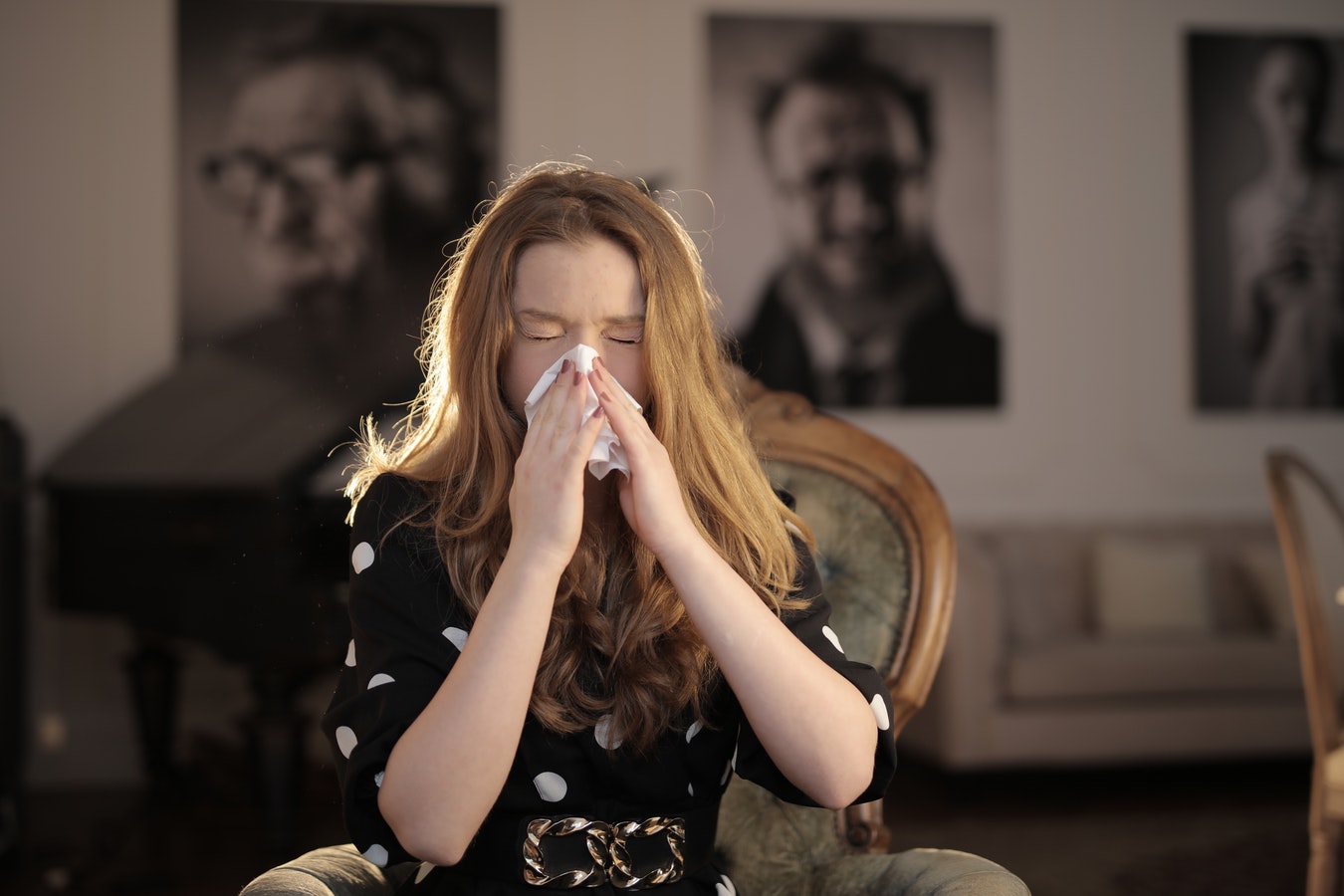Updated: 04/13/2025
For families here in Sonoma County, your home should be a sanctuary. Yet for many, it becomes a source of discomfort due to hidden allergens that trigger sneezing, coughing, and itchy eyes.
These indoor pollutants can be particularly troublesome during our distinct Northern California seasons, when we’re spending more time indoors with windows closed. Understanding the common allergens in your home and how your HVAC system can help manage them is essential for creating a healthier living environment.
| Allergen Type | Key Points |
|---|---|
| Dust Mites | Thrive in humid environments; need 50% humidity or lower to control |
| Pet Dander | Microscopic particles that remain airborne for hours; filtered by HEPA systems |
| Pollen | Seasonal outdoor allergen that enters through windows, doors, and on clothing |
| Mold Spores | Flourish in damp areas; proper ventilation and humidity control are essential |
Understanding Common Indoor Allergens in Sonoma County Homes
Indoor air quality is a significant concern for Sonoma County residents. According to the Environmental Protection Agency (EPA), indoor air can be two to five times more polluted than outdoor air, making it a critical health consideration. This is particularly relevant in our region, where seasonal changes bring varying allergen challenges throughout the year.
Dust mites are perhaps the most common indoor allergen, thriving in bedding, upholstered furniture, and carpeting. These microscopic creatures feed on dead skin cells and flourish in environments with humidity levels above 50%. Another prevalent allergen is pet dander – tiny, even microscopic, flakes of skin shed by cats, dogs, and other furry or feathered pets. Unlike pet fur, which is visible, dander particles are so small they can remain suspended in the air for hours.
Mold spores represent another significant indoor allergen, particularly in bathrooms, kitchens, and basements where moisture levels are higher. In Sonoma County, our relatively mild climate with periods of higher humidity creates ideal conditions for mold growth in poorly ventilated spaces. Seasonal outdoor allergens like pollen can also make their way indoors through open windows, doors, and on clothing, causing year-round symptoms for allergy sufferers.
How Your HVAC System Can Combat Allergens
Your home’s heating and cooling system plays a critical role in managing indoor allergens. A well-maintained HVAC system does more than just regulate temperature—it filters air, controls humidity, and improves ventilation, all of which are essential for reducing allergen levels in your home. The first line of defense is your air filter, which captures particles as air circulates through your system.
Not all filters are created equal when it comes to allergen removal. Standard filters may catch larger particles but miss the microscopic allergens that cause the most trouble. For effective allergen reduction, consider upgrading to:
- HEPA (High-Efficiency Particulate Air) filters, which can remove up to 99.97% of particles as small as 0.3 microns, including most allergens
- Pleated filters with a MERV rating of 8-13, offering a good balance between filtration and system efficiency
- Electrostatic filters that use an electrical charge to attract and trap allergen particles
- UV light systems that can be installed in your HVAC unit to kill mold spores and bacteria as air passes through
- Whole-home air purification systems that work alongside your existing HVAC system for comprehensive coverage
Beyond filtration, proper humidity control is essential for allergen management. In Sonoma County, our humidity levels can vary throughout the year. Maintaining indoor humidity between 30-50% helps prevent dust mite proliferation and mold growth. This can be achieved through your HVAC system with the addition of whole-home humidifiers or dehumidifiers as needed. For more comprehensive strategies on managing allergies through your HVAC system, visit our guide on maximizing your HVAC system to help allergies.
Practical Steps for Allergen Prevention in Your Home
Effective allergen prevention requires a multi-faceted approach that combines proper HVAC maintenance with household cleaning practices. Start with regular heating system maintenance and cooling system checks to ensure optimal performance of your filtration and ventilation systems. Our experience with local homes shows that systems checked twice yearly provide the best protection against allergen buildup.
In addition to HVAC maintenance, implement these home care strategies to minimize allergens:
- Vacuum carpets and upholstery using a HEPA-equipped vacuum at least twice weekly to remove embedded dust mites and pet dander.
- Wash bedding in hot water (130°F or higher) weekly to kill dust mites and remove allergens.
- Reduce household humidity through proper ventilation, especially in bathrooms and kitchens where moisture accumulates.
- Remove shoes at the door to prevent tracking in outdoor allergens like pollen and environmental pollutants.
- Consider removing carpet in favor of hard flooring, which doesn’t harbor allergens as readily and is easier to clean thoroughly.
Air duct cleaning is another crucial component of allergen management that’s often overlooked. Over time, your ductwork can accumulate dust, pet dander, pollen, and even mold spores that get recirculated throughout your home each time your system runs. Professional duct cleaning every 3-5 years can significantly reduce this reservoir of allergens, especially after home renovation projects or if you’ve recently moved into a new home. For homes with family members who have severe allergies or asthma, more frequent cleaning may be beneficial.
Seasonal Considerations for Sonoma County Residents
Here in Sonoma County, our unique climate brings different allergen challenges throughout the year. Spring introduces tree and grass pollens, summer brings increased mold spores due to warmer temperatures, fall arrives with weed pollens like ragweed, and winter often means more time indoors with windows closed, concentrating indoor allergens.
Adjust your allergen prevention strategy seasonally by increasing filtration during high pollen seasons, monitoring indoor humidity during damper months, and scheduling your spring HVAC cleaning before allergy season hits full force. Many local families find that preparing their systems specifically for allergy season provides significant relief when symptoms typically worsen.
According to the Centers for Disease Control and Prevention (CDC), more than 50 million Americans suffer from allergies each year, making it the sixth leading cause of chronic illness in the United States.
Advanced Solutions for Severe Allergy Sufferers
For households with family members who experience severe allergic reactions, standard prevention measures may need to be supplemented with more advanced solutions. Whole-home air purification systems that integrate with your existing HVAC setup can provide continuous, comprehensive filtration throughout your entire home. These systems are particularly effective because they clean all the air circulating through your home, not just the air in a single room like portable air purifiers.
UV light air purification systems installed within your HVAC unit offer another layer of protection by neutralizing biological contaminants like mold spores, bacteria, and viruses as air passes through your system. This technology is especially valuable in Sonoma County, where our climate can create conditions favorable to biological allergen growth.
For homes with particularly sensitive individuals, creating dedicated “clean rooms” with enhanced filtration and allergen-resistant materials can provide a safe haven when symptoms are at their worst. This typically involves a bedroom equipped with an additional air purifier, allergen-proof bedding encasements, minimal fabric furnishings, and more frequent cleaning protocols.
Dust Mites Control
Limit humidity to 50% or lower to control these microscopic pests.
Pet Dander Management
Use HEPA filters to capture airborne pet dander particles effectively.
Mold & Pollen Defense
Ensure proper ventilation and control humidity to prevent mold growth.
Conclusion: Creating an Allergen-Resistant Home Environment
Managing indoor allergens requires vigilance and a comprehensive approach that includes proper HVAC maintenance, strategic home cleaning, and possibly specialized equipment for those with severe sensitivities. By understanding the common allergens in your Sonoma County home and implementing the prevention strategies we’ve discussed, you can significantly reduce allergy symptoms and create a healthier living environment for your family.
Remember that your HVAC system is your first line of defense against indoor allergens, but it needs proper care to function effectively. Regular maintenance, appropriate filtration, and attention to humidity control are all essential components of an allergen prevention strategy. For more information about improving your home’s air quality or to discuss specialized solutions for your family’s specific needs, contact our team at Dale HCS.
As your neighbors here in Santa Rosa, we understand the unique challenges Sonoma County residents face when it comes to indoor air quality and allergens. Our family-owned business is committed to helping your family breathe easier through expert HVAC services designed to combat even the most stubborn indoor allergens.

